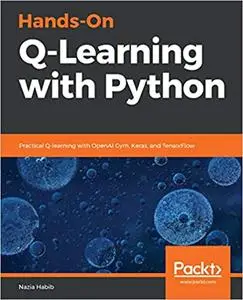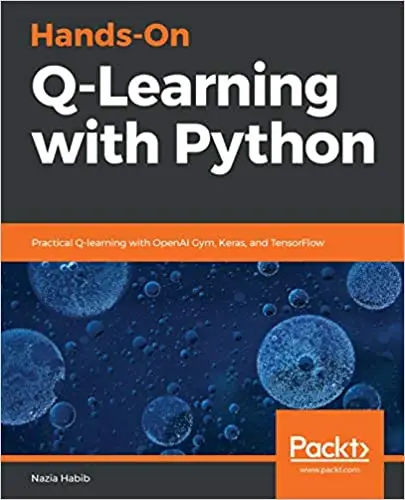Nazia Habib, "Hands-On Q-Learning with Python: Practical Q-learning with OpenAI Gym, Keras, and TensorFlow"
English | 2019 | ISBN: 1789345804 | PDF | pages: 200 | 9.5 mb
English | 2019 | ISBN: 1789345804 | PDF | pages: 200 | 9.5 mb
Leverage the power of reward-based training for your deep learning models with Python
Key Features
- Use Q-learning to train deep learning models using Markov decision processes (MDPs)
- Study practical deep reinforcement learning using deep Q-networks
- Explore state-based unsupervised learning for machine learning models
Book Description Q-learning is a machine learning algorithm used to solve optimization problems in artificial intelligence (AI). It is one of the most popular fields of study among AI researchers.
This book starts off by introducing you to reinforcement learning and Q-learning, in addition to helping you get familiar with OpenAI Gym as well as frameworks such as Keras and TensorFlow. A few chapters into the book, you will gain insights into model-free Q-learning and use deep Q-networks and double deep Q-networks to solve complex problems. This book will guide you in exploring use cases such as self-driving vehicles and OpenAI Gym's CartPole problem. You will also learn how to tune and optimize Q-networks and their hyperparameters. As you progress, you will understand the reinforcement learning approach to solving real-world problems. You will also explore how to use Q-learning and related algorithms in real-world applications such as scientific research. Toward the end, you'll gain a sense of what's in store for reinforcement learning.
By the end of this book, you will be equipped with the skills you need to solve reinforcement learning problems using Q-learning algorithms with OpenAI Gym, Keras, and TensorFlow.
What you will learn
- Explore the fundamentals of reinforcement learning and the state-action-reward process
- Understand Markov decision processes
- Get well versed with frameworks such as Keras and TensorFlow
- Create and deploy model-free learning and deep Q-learning agents with TensorFlow, Keras, and OpenAI Gym
- Choose and optimize a Q-Network's learning parameters and fine-tune its performance
- Discover real-world applications and use cases of Q-learning
Who this book is for If you are a machine learning developer, engineer, or professional who wants to delve into the deep learning approach for a complex environment, then this is the book for you. Proficiency in Python programming and basic understanding of decision-making in reinforcement learning is assumed.
Table of Contents
- Brushing Up on Reinforcement Learning Concepts
- Getting Started with the Q-Learning Algorithm
- Setting Up Your First Environment with OpenAI Gym
- Teaching a Smartcab to Drive Using Q-Learning
- Building Q-Networks with TensorFlow
- Digging Deeper into Deep Q-Networks with Keras and TensorFlow
- Decoupling Exploration and Exploitation in Multi-Armed Bandits
- Further Q-Learning Research and Future Projects
- Assessments



